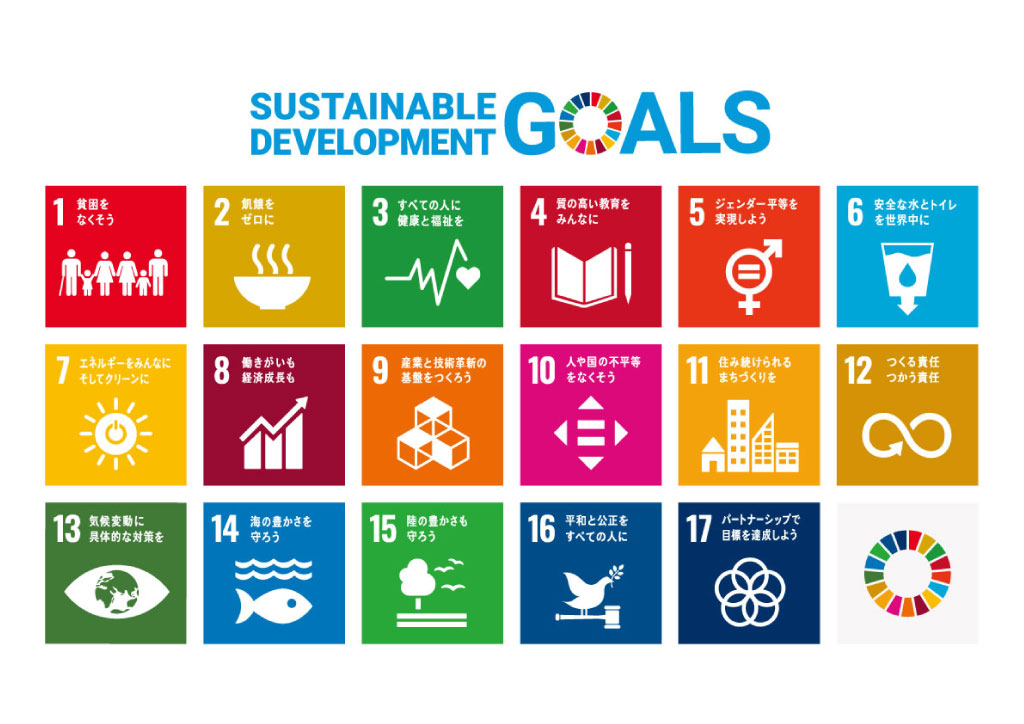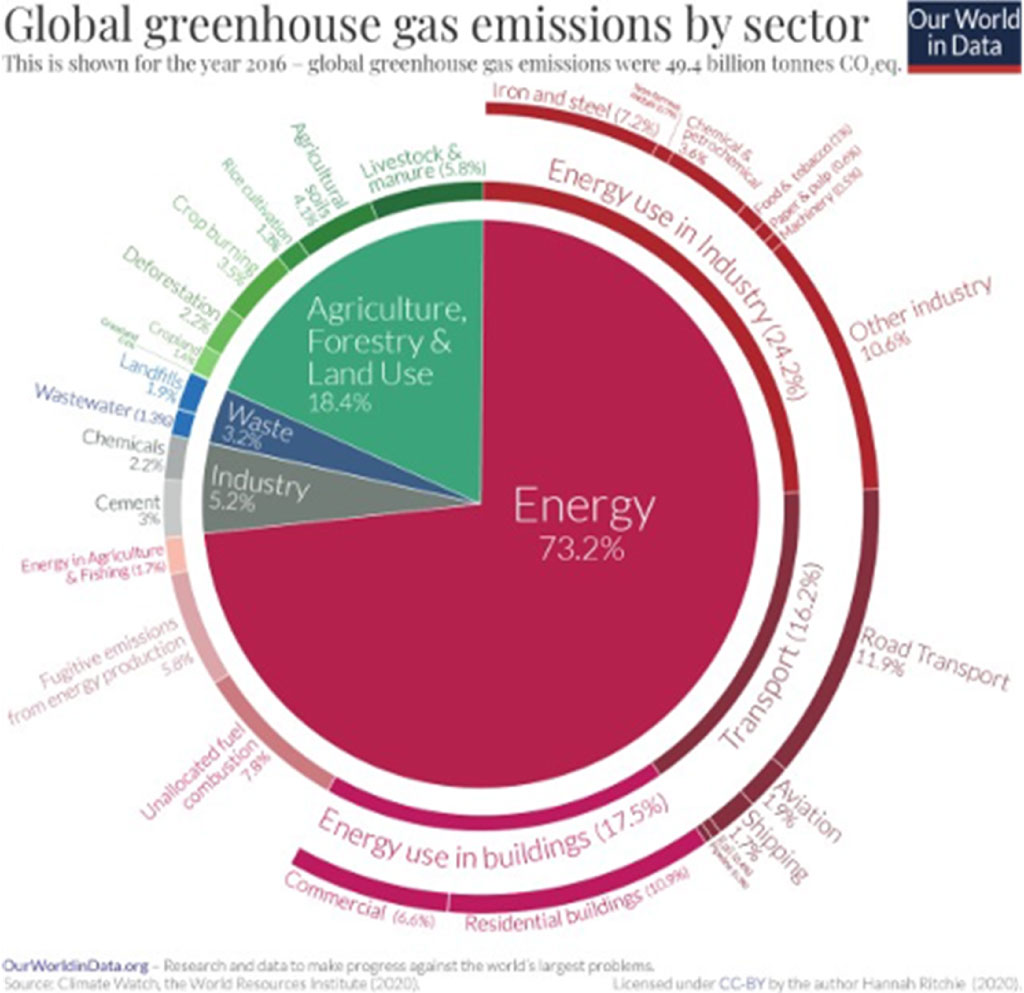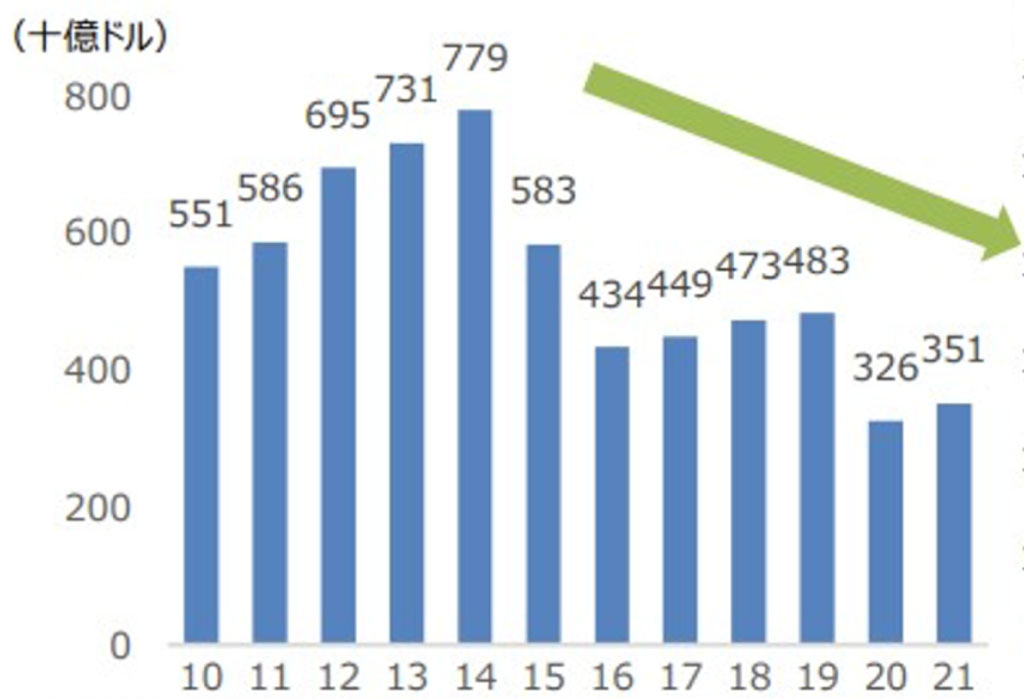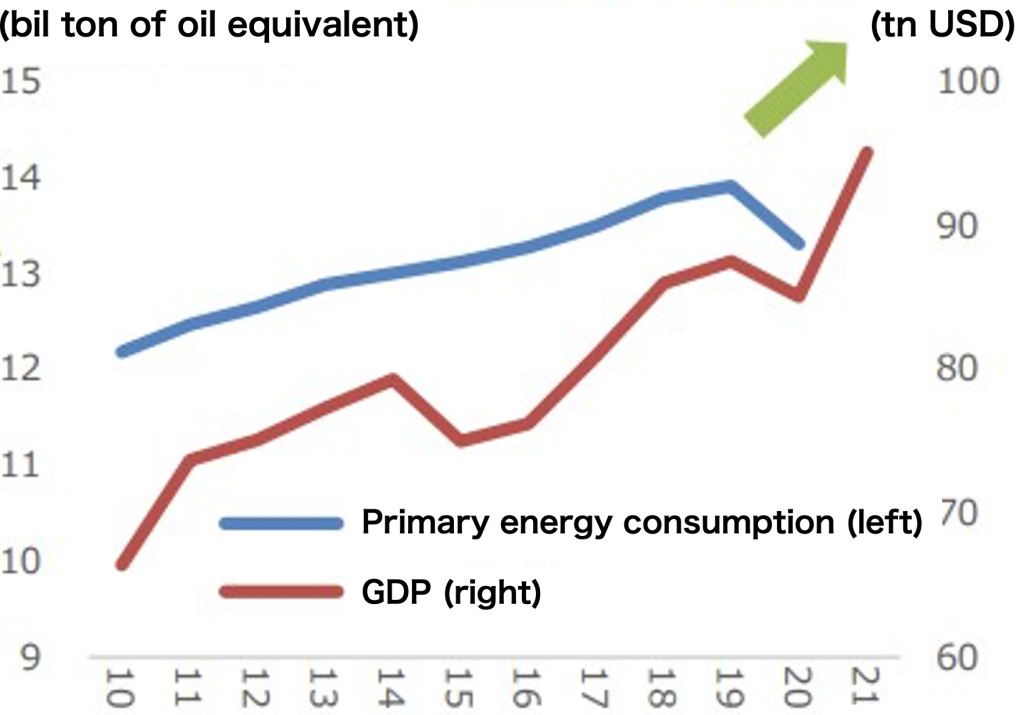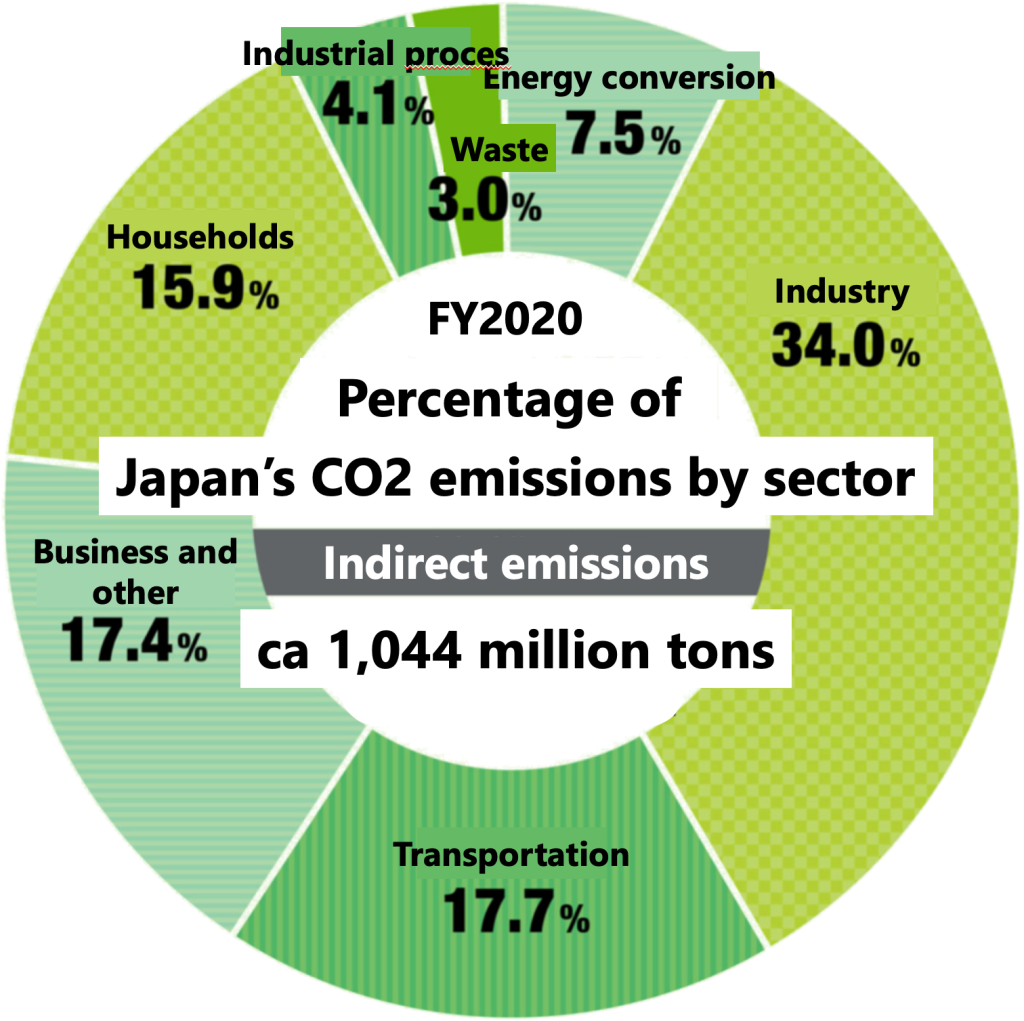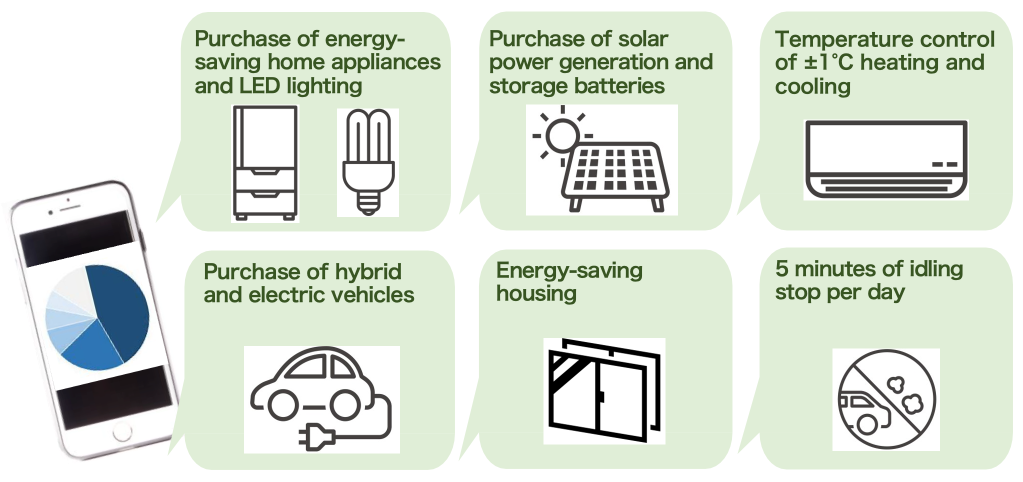The UN Sustainable Development Goals (SDGs), which we often see mentioned these days, also focus on environmental issues such as climate and resources: for example, SDG 13 focuses on “Climate Action”, SDG014 on “Life Below Water”, and SDG 15 on “Life on Land”.
In order to sustain the global environment and the resources of the oceans and the land in the future, it is important to halt the progression of climate change. This means we need to reduce emissions of CO₂ and other greenhouse gases, which is a global challenge.
Three-quarters of the world’s CO₂ emissions come from the production of energy, which provides us with the heat, light, and transportation that we enjoy every day. Therefore, rethinking the way we use energy is crucial if we are to maintain the global environment.


